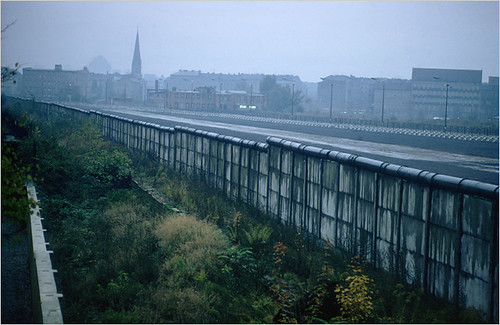The Great Urban Divide

[Image: Adhamiya, Baghdad, Iraq. Ali Haider European Pressphoto Agency, NYT - 2007.]
If there is anything good to become of the American strategy to wall off strategic neighborhoods in Baghdad (besides the ironic perhaps even temporary solidarity of the Sunnis and Shiites) it is that -- at the very least -- everyone is talking about it: the idea of using urban dividers to engineer political discipline. At least the general topic has reached a new high in mainstream dinner conversation, I suppose.
An article from the weekend’s New York Times gives us a little history on the use of physical walls in imposing a political obedience on people in old Malaysia and more recently in Vietnam.
Tim Weiner writes about Britain “At the close of their colonial era, after World War II” when “they isolated the ethnic Chinese population in Malaya, building “new villages” and herding hundreds of thousands of people into them.” Literally like an architectural filtration system the walls, as we have seen in numerous places over time, are not only used to control entire populations, but essentially to push a discipline onto them. After the Brits segregated a portion of the Chinese behind barbed wire fences, Weiner tells us, they (the Brits) attacked the Chinese insurgents beyond the walls. Hmmm….I’m not sure who the winner is supposed to be in that scenario.

[Image: The Berlin Wall, as photographed by Ernst Haas/Getty Images, NYT - 2007.]
In his piece we are also reminded of the U.S.’s occupation of Vietnam and how they “were never skillful enough — or tough enough,” he says, “to sort out their foes, the Vietcong insurgents, from their South Vietnamese friends behind the stockade fences of their “strategic hamlets.””
Yet, despite this not too distant historic failure the Americans have put their hopes in the same strategic basket in Baghdad, where the entrenchment of the insurgency is just as deep and inseparable as the civilian population if not vastly more sophisticated. I mean, how many more parallels can be drawn between Iraq and Vietnam? Iraq is literally becoming a cumulative representation of all that has gone wrong in imperial conflict before it.
Weiner refers to these as the “walls of war – the architecture of long struggle.”
More interesting though is his reference to David Galula, a French military officer who fought Algerian rebels in their war of independence 50 years ago.
“If we distinguish between people and rebels, then we have a chance,” he wrote. But that is only a start: “Political, social, economic and other reforms, however much they ought to be wanted and popular, are inoperative when offered while the insurgent still controls the population.”
He continued: “So intricate is the interplay between political and military actions that they cannot be tidily separated; on the contrary, every military move has to be weighed with regard to its political effects.”
A simple but telling final statement. Anyway, the rest of the article is worth reading, and in case you missed it – check out our last post that outlines a partial geography of the worldwide spread of global border walls and militarized fences. Surely the militarization of the border or use of high-security gated communities is not endemic to Iraq alone.
(Thanks to Rob and Geoff for passing the Times piece my way.)







3 Comments:
http://www.rebelart.net/diary/?p=182#more-182
In the beginning of April 40 people, lead by Baqir al-Sheik, started painting the newly installed walls in Bagdad.
thanks Niloufar!
I blogged it.
Urban divides were built within the United States too. Looking at the history of 20th Century urban infrastructure, many of the freeways built in American cities served to wall off undesirable neighborhoods from the city center. Great post.
Post a Comment
<< Home